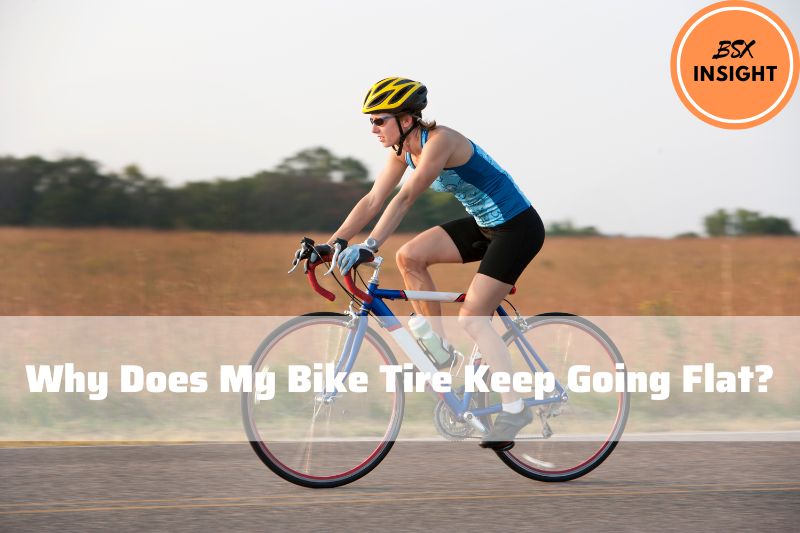Riding a bike can be a fun and healthy way to get around, but there’s nothing more frustrating than a bike tire that keeps going flat.
Many cyclists have experienced the annoyance of constantly having to pump up their tires or replace inner tubes.
If you’re wondering “why does my bike tire keeps going flat,” there are several possible reasons.
In this article, BSXInsight will explore some of the common causes of flat bike tires and provide tips on how to prevent them, so you can enjoy a smooth, worry-free ride.
Why Does My Bike Tire Keep Going Flat?

1. Something Sharp is Stuck in The Tire.
One of the most common reasons for a flat tire is that something sharp, like a nail or a piece of glass, is stuck in the tire.
When the object penetrates the tire and tube, it creates a hole, causing the tire to lose air. In some cases, the object may still be in the tire, making it difficult to keep the tire inflated even after patching the hole.
2. Your Tire is Worn Out.
Just like any other part of your bike, your tires will wear out over time. The rubber on your tire’s surface will eventually become too thin, and this makes it easy for sharp objects to penetrate the tire and cause punctures.
Additionally, worn-out tires are more susceptible to cracking and tearing. You can check if your tires are worn out by looking at the tread. If it is worn down or has a smooth surface, it is time to replace your tires.
3. The Tube is Getting Pinched While It is Being Changed.
When changing your bike tire, it is important to be careful not to pinch the tube between the tire and the rim.
Pinching the tube can create a hole in the tube, causing it to lose air. To avoid this issue, make sure to properly seat the tire onto the rim and inflate it slowly, checking for any pinched areas before fully inflating the tire.
4. Riding with Low Tire Pressure or Hitting an Object on The Road.
If you ride your bike with low tire pressure, you are more likely to experience flat tires. The lack of air pressure makes it easier for objects to penetrate the tire and cause punctures.
Additionally, hitting an object in the road, like a curb or a pothole, can cause a sudden loss of air pressure in your tire, leading to a flat.
To avoid this issue, make sure to regularly check and maintain your tire pressure and try to avoid hitting any obstacles on the road.
5. Rim Tape isn’t Covering the Spoke Holes.
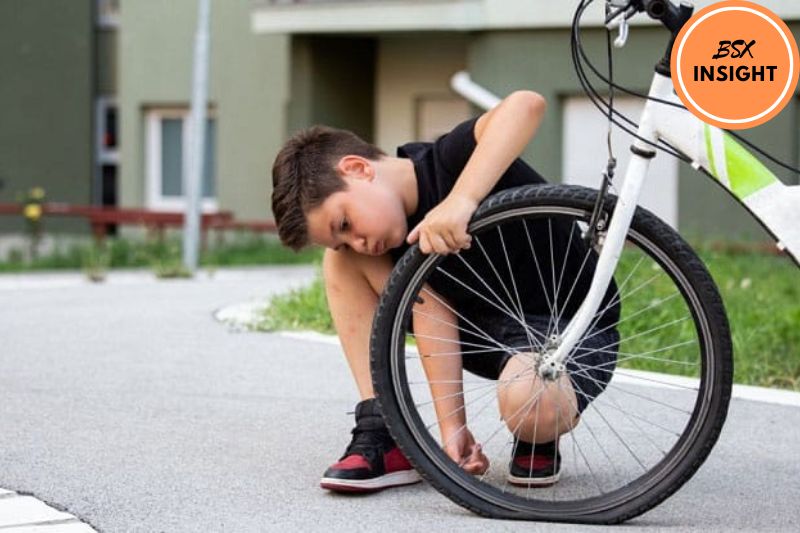
Rim tape is a thin strip that covers the spoke holes in the rim of your bike tire. Without rim tape, the ends of the spokes can protrude through the holes and puncture the tube.
If your rim tape is worn out or damaged, it is important to replace it to avoid flats.
To check if your rim tape is in good condition, remove your tire and inspect the rim. If the tape is damaged or missing, replace it before reassembling the tire.
6. Products to Help Reduce Your Chances.
While it may not be possible to completely eliminate the chance of getting a flat tire, there are some products that can help reduce the frequency of flat tires. One such product is puncture-resistant tires.
These tires have an extra layer of material that makes it more difficult for sharp objects to penetrate the tire.
Another option is tire liners, which are strips of material that go between the tire and tube and act as an additional barrier against punctures.
Tips To Prevent Flat Tires in the Future
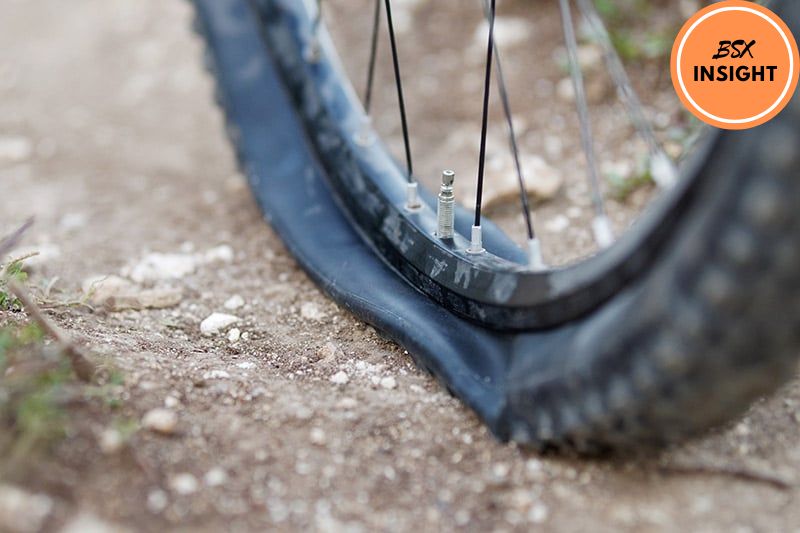
1. Be Careful with Bike Tire Pressure
One of the most common causes of flat tires is improper tire pressure. If your tire pressure is too low, you increase the likelihood of getting a pinch flat.
Pinch flats occur when the tube gets pinched between the rim and the ground. This usually happens when you hit a bump or object in the road.
To avoid pinch flats, make sure you keep your tire pressure at the recommended level. The recommended tire pressure can usually be found on the sidewall of the tire.
On the other hand, if you overinflate your tires, you run the risk of blowing out the tube. Overinflated tires also have less traction and can be more susceptible to punctures. Make sure to check your tire pressure regularly, especially before long rides.
2. Maintain Your Bike
Proper bike maintenance can also help prevent flat tires. Regularly inspect your tires for any signs of wear or damage. Look for cuts, holes, or worn areas on the tread. If you notice any of these issues, replace the tire immediately.
You should also check your rims for any sharp edges or burrs that could damage the tube. Smooth out any rough spots with sandpaper or a file.
Additionally, make sure your wheel is true and properly aligned. A wobbly wheel can cause the tire to rub against the frame or brake pads, which can lead to a flat.
3. Invest in Quality Equipment
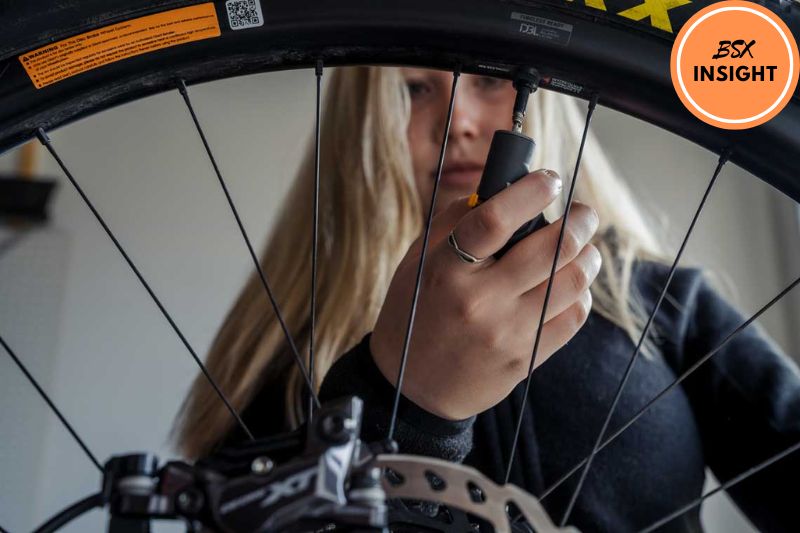
Investing in quality equipment can also help prevent flat tires. A good quality tire can be more resistant to punctures and cuts. Look for tires that are made with puncture-resistant materials, such as Kevlar or other synthetic fibers.
Quality inner tubes can also make a difference. Look for tubes that are made with thicker, more durable rubber. Some tubes also come with a pre-installed sealant, which can help seal small punctures on the spot.
In addition to quality tires and tubes, consider upgrading your rim tape. Rim tape is a strip of material that sits between the rim and the tube.
If the rim tape is old or worn out, it can allow the spoke nipples to puncture the tube. Upgrading to a high-quality rim tape can help prevent this from happening.
By being careful with tire pressure, maintaining your bike, and investing in quality equipment, you can greatly reduce your chances of getting a flat tire. With these tips, you can enjoy your rides without worrying about constantly fixing or replacing your bike tires.
Tips for Properly Changing a Tire
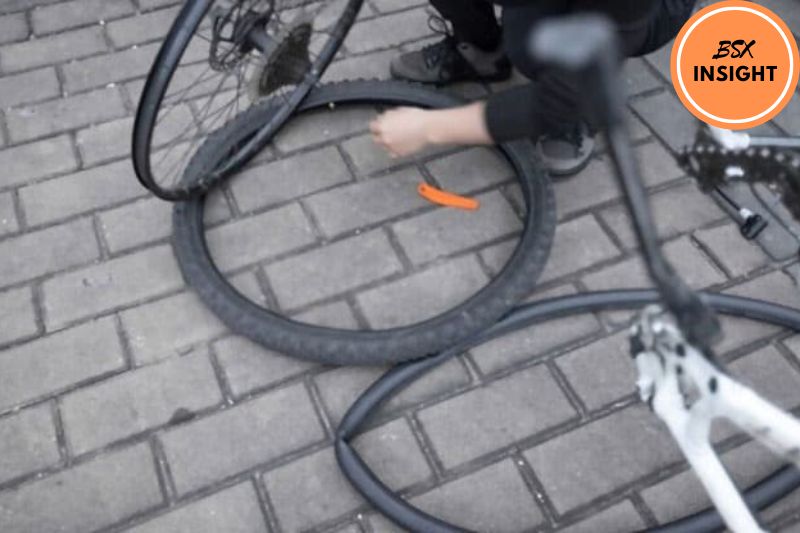
Changing a bike tire is an essential skill that every cyclist should know. Even with the best preventative measures, a flat tire can still happen.
Being able to change a tire quickly and efficiently can save you from being stranded on the side of the road. Here are some tips for properly changing a tire:
- Carry the right tools: Before you set out on a ride, make sure you have all the necessary tools to change a tire. This includes a spare inner tube, tire levers, a pump or CO2 cartridge, and a multi-tool.
- Remove the wheel: First, shift the gears to the smallest cog on the rear wheel to make removing the wheel easier. If you have rim brakes, release them by undoing the quick release or opening the brake calipers. Remove the wheel by undoing the quick release or axle if you have disc brakes.
- Remove the tire: Using the tire lever, pry the tire away from the rim, and work your way around the wheel. Once one side of the tire is off, remove the inner tube and inspect the tire for any debris or damage that may have caused the flat.
- Install the new tube: Inflate the new inner tube slightly, then insert the valve stem into the rim hole. Work the rest of the tube into the tire, starting at the valve stem and working your way around the tire. Make sure the tube is not twisted and is completely inside the tire.
- Reinstall the tire: Start at the valve stem and work the tire back onto the rim. Use your hands to push the tire back onto the rim, being careful not to pinch the inner tube. Once the tire is on, use the tire lever to push the final section of the tire back onto the rim.
- Reinstall the wheel: Make sure it is oriented correctly, then reattach it to the bike. If you have rim brakes, make sure they are properly adjusted and tightened. If you have disc brakes, make sure the quick release or axle is properly tightened.
- Check the tire pressure: Use a pump or CO2 cartridge to inflate the tire to the recommended pressure, which is usually printed on the side of the tire. Check the tire for any bulges or wrinkles, which can indicate that the tire is not properly seated on the rim.
How Often Should You Check Your Road Bike’s Tire Pressure?
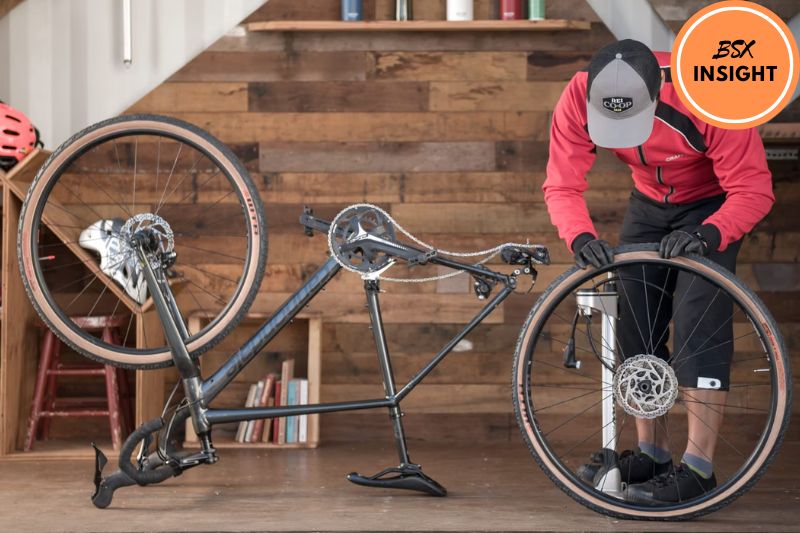
Checking your road bike’s tire pressure is essential to bike maintenance, ensuring a safe and smooth ride. Generally, it’s recommended to check your tire pressure at least once a week.
However, this can vary depending on factors such as how often you ride, the type of terrain you ride on, and the temperature outside.
If you’re an avid cyclist who rides daily, you may want to check your tire pressure more frequently to ensure optimal performance.
Additionally, if you frequently ride on rough or rocky terrain, you may want to check your tire pressure before each ride to ensure that your tires are properly inflated and less likely to puncture.
Temperature can also impact tire pressure, as colder temperatures can cause the air in your tires to contract, leading to a loss in pressure.
Therefore, if you live in an area with fluctuating temperatures, it’s important to check your tire pressure regularly to ensure that it’s at the proper level.
In summary, checking your road bike’s tire pressure once a week is an excellent general guideline. Still, it’s essential also to consider factors such as how often you ride, the type of terrain you ride on, and the temperature outside to determine how often you should check your tire pressure.
FAQs
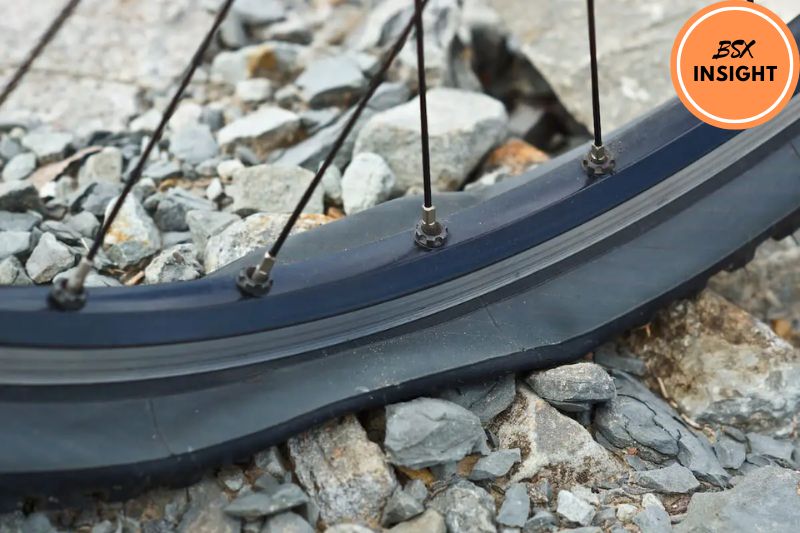
How can I tell if my bike tire is worn out?
Look for signs of wear on the tire, such as cracks, bulges, or worn-out treads. You can also check the sidewall for any damage. If you notice any of these signs, it’s time to replace your tire.
What should I do if I get a flat tire while on a ride?
You can replace the tube yourself if you have a spare tube and the tools to change a tire. Otherwise, you can walk your bike to a bike shop or call for a ride. It’s always a good idea to carry a patch kit and tire levers with you in case of a flat tire.
Can I fix a punctured bike tire myself?
You can fix a punctured bike tire using a patch kit. However, it’s important to note that not all punctures can be patched, and a damaged tire should always be replaced.
Can low tire pressure cause flat tires?
Yes, riding with low tire pressure can increase your risk of getting a flat tire. It can also cause damage to the tire and decrease your bike’s performance.
What is rim tape, and why is it important?
Rim tape is a material strip covering the spoke holes on the wheel rim. It helps to protect the inner tube from getting punctured by the spoke ends. The spoke ends can rub against the inner tube without rim tape and cause a flat tire.
Conclusion
In conclusion, a bike tire can go flat for various reasons, including punctures, worn or damaged tires, improperly installed tires or tubes, and underinflation.
Regularly inspecting and maintaining your bike tires can help prevent flats and ensure a safe and enjoyable ride.
It’s also important to carry a spare tube, patch kit, and tire levers with you when you ride, so you can quickly fix any flat tires that occur.
If you’re unsure how to maintain and repair your bike tires properly, consider consulting a professional bike mechanic. With the right care and attention, you can enjoy a smooth, flat-free ride on your bike.

